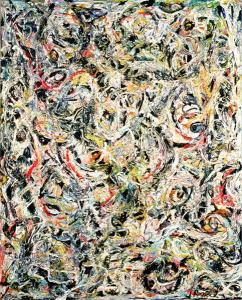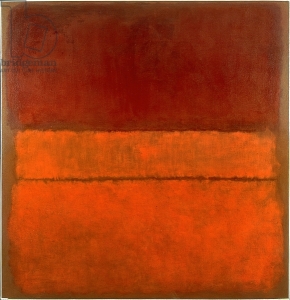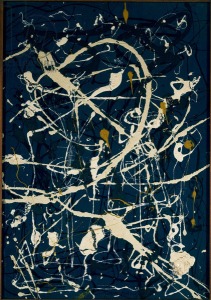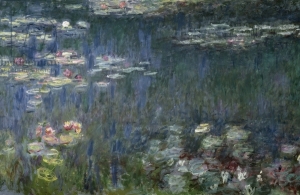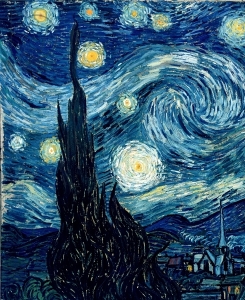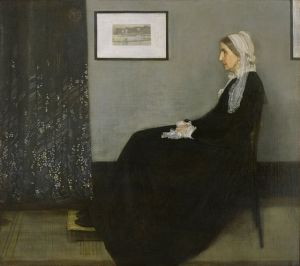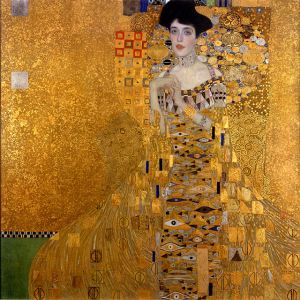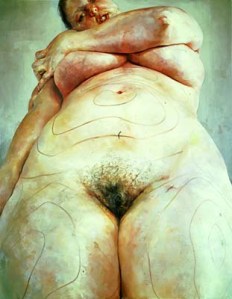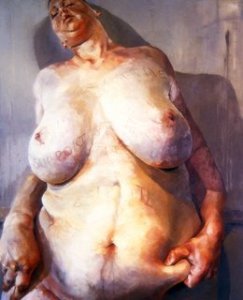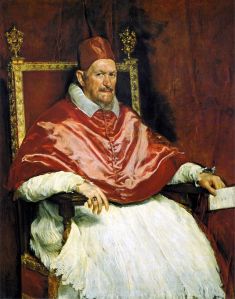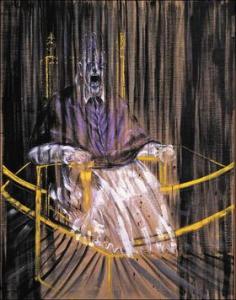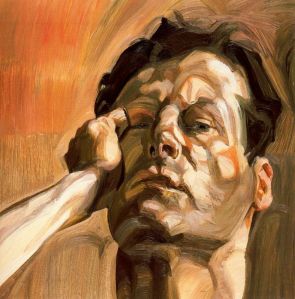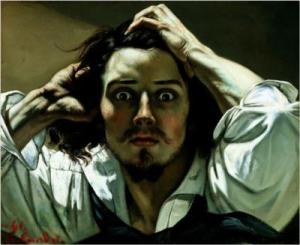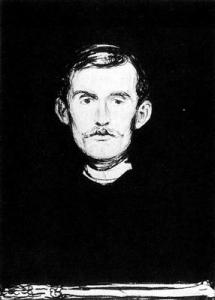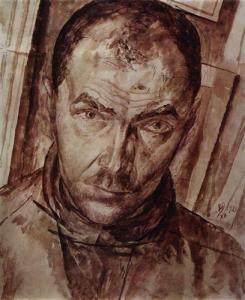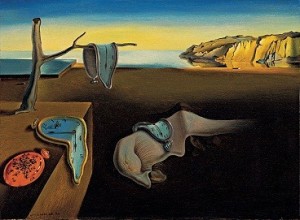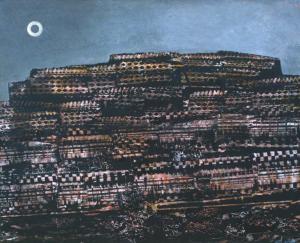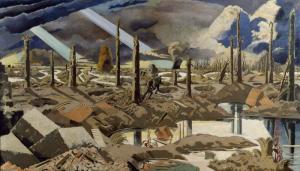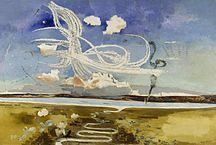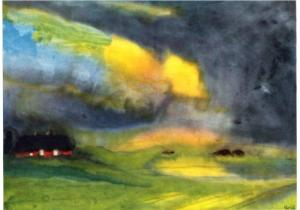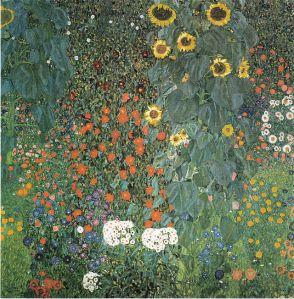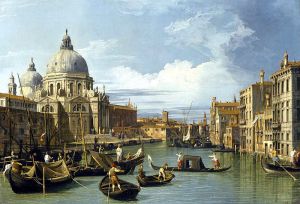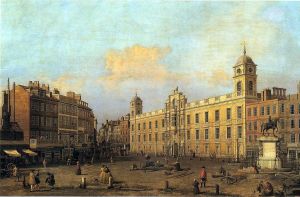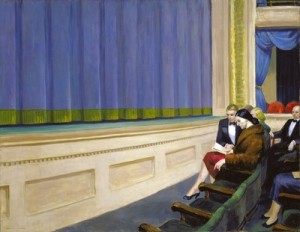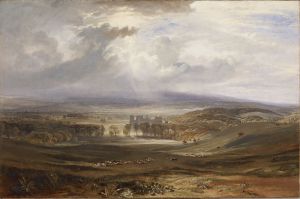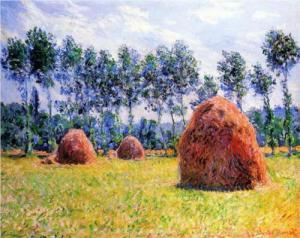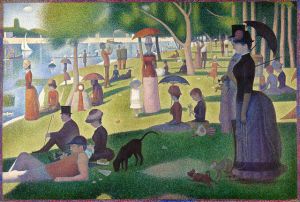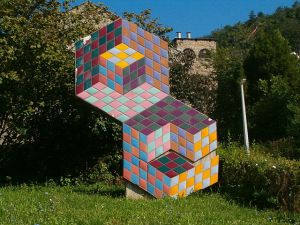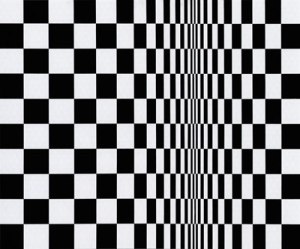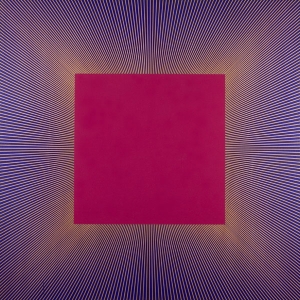Evolution of landscape painting from the eighteenth century to the present day.
This seems quite a vast subject to research. I have picked notable art movements and painters, and worked on a timeline until the present day, noting how the genre has changed and evolved through English water-colourists, Neo Impressionists, Impressionists, Post Impressionists, Scandinavian art, German Expressionism, Edward Hooper, Hyper-realists such as John Salt, then David Hockney, and finally contemporary landscape artists I admire.
British Water-colourists 1850-1900
The British watercolourist are accredited with bringing landscape painting to the forefront of painting society from 1850-1900. Before this time, landscape painting was seen as a background to the main focus of the painting, namely portrait, animal or religious scenes.
The English watercolourists were originally in two camps; artists such as Paul Sandsby who had previously worked as a military draftsman and had the view that landscape art should be portrayed realistically -accurate and topographical, like recording the details on a map. In the other school of thought were artists such as Alexander cozens and John Sell Cotman who preferred more romantic poetic and imaginative approaches, and this was reflected in their work.
Paul Sandsby 1731 – 1809
Hailed as the Father of English watercolour painting, Paul Sandsby enjoyed success during his lifetime, and through his involvement with the Royal academy of which he was one of the founding members), raised the status of landscape (and watercolour) painting. He capitalised on the fashion for rich landowners showing scenery of plentiful landscapes. Estate portraiture provided Sandsby with his main source of income, as landowners were keen to show themselves as productive and plentiful as an indicator of their success on the social ladder.
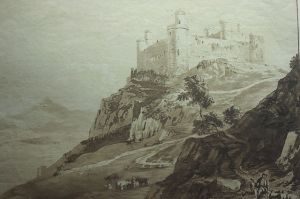
Harlech Castle by Paul Sandby 1776″
Thomas Girtin 1775-1805
Considered an equal of Constable and Turner in his own field, Tomas Girtin was known for his innovative watercolour landscapes,and he played a central role in establishing the medium as a major art from. Girtin’s early works were in the 18th-century topographical style, but he later developed a bolder technique, which was more reflective of mood and space. Girtin was a friend of JMW Turner.
Girtin died at just 27 from TB. It is interesting of his influence and style at the time, that Turner is said to have remarked ‘ if Tom Girtin had lived, I should have starved.’
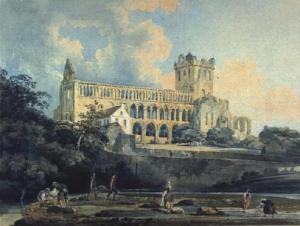
Thomas Girtin The York Project
Picturesque/Romantic Landscape style
Alexander Cozens 1717-1786
A leading water colourist of the 18th century, and one of the first important British painters to focus exclusively on landscapes. He had a more subjective, romantic and imaginary viewpoint.
Cozens devised a technique called blot painting that he developed from one of Leonardo Do Vinci’s ideas. He used randomly placed blots on the drawing paper to fire his imagination, then developed them into imaginary landscapes. He worked almost exclusively in monochrome washes. He used contrasting areas of light and dark to suggest drama and perspective.
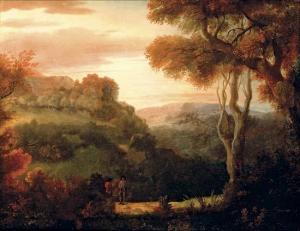
Vale near Matlock
Impressionist Movement approx 1863-1866
Impressionists set out to paint the effects of light, by using visible brushstrokes of pure colour. At some stage, all of the impressionist painters experimented with the practice of plein- air (outdoor) painting, completing usually quite small paintings on the spot.This enabled them to capture the more realistic and fleeting sensations of light and weather conditions.
Monet is probably most famous for his landscapes of his garden at Giverney and his waterlilies paintings, which he painted over and over again over several years, showing the time of days and how different seasons affected the light.
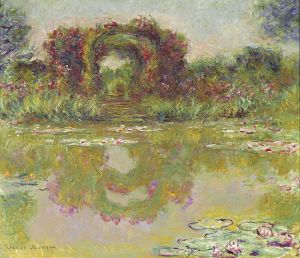
Claude Monet – Les arceaux de roses, Giverny (Les arceaux fleuris)
Neo /Post Impressionism
Neo/PostIimpressionism were both directly influenced by impressionism and a rejection of its conformed painting style. Neo-Impressionism is characterised by the paintings of George Seurat and his use of dots and pure colour, while the central figures of Post-Impressionism were Van Gogh, Gaughan, and Cezanne.
Neo -impressionism was a term coined by an art critic referring to a group of paintings based on Seurats’s scientific principles of colour and form.As he saw it, pointillism was a technique that pushed impressionism a stage further in its direction of art and colour. Seurat’s Sunday afternoon on the Island of La grande Jette was the painting that launched Neo-Impressionism, but his work Alfalfa, St. Denis 1885 perfectly demonstrates his pointillism technique in a landscape painting.
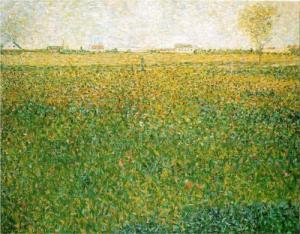
Alfalfa, St. Denis 1885
The Nabis art movement
Nabis, a late 19th century group of artists painted in ways to reflect their own personal metaphors and symbols. They maintained that a work of art reflects an artist’s synthesis of nature into personal aesthetic metaphors and symbols.
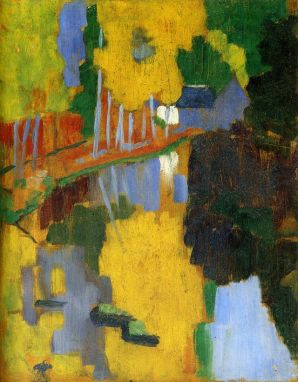
Talisman, 1888 Oil on wood
Scandinavian Art
In the latter part of the 19th century, Scandinavian artists had shifted to a French inspired model of art , establishing a Nordic style of plein air art, in which nature was linked with states of mind and imagination.
Regarded as Finlands mist celebrated painter, and a driving force behind the creation of a Finnish style, Gallen-Kallela was an important figure in the Art Nouveau and symbolist movements. He studied in Paris and travelled widely, but was increasingly inspired by the haunting Finnish landscape, which he used as a vehicle to explore issues of Finnish Nationality.
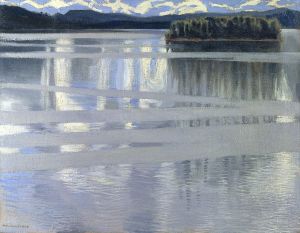
akseli_gallen-kallela_-_lake_keitele_1905
German Expressionism
Erich Heckel 1883-1970
Heckel’s main themes were landscapes and men and women bathing. He painted in thick primary colours squeezed straight from the tube. Heckel did not employ conventional perspective, and this shows most clearly in his landscapes. He brought a drama to his work by using colour and representation in an extreme way.
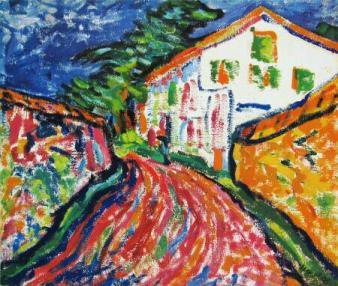
‘Weisses_Haus_in_Dangast’,_oil_painting_by_Erich_Heckel,_1908
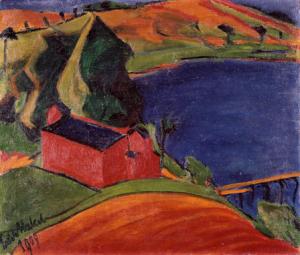
Erich Heckel – Lake near Moritzburg (1909)
Realism
Edward Hopper 1882-1967
Edward Hopper’s atmospheric portrayals of East Coast scenes made him one of the best known American realist painters of the 20th century. Hopper painted in an introspective melancholic style; that evolved from his earlier almost Impressionistic work. During the 19030s, Hopper depicted urban scenes with bright lights and intense shadows peopled with solitary figures, the most famous of all being Nighthawks.
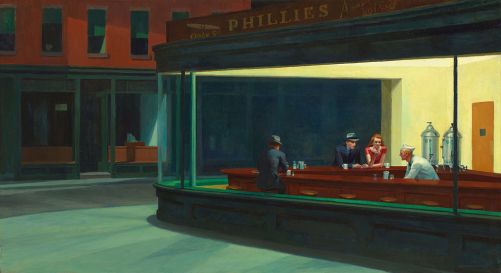
Nighthawks_by_Edward_Hopper_1942
Hyper Realism
John Salt -1937
Is an English artist from the Midlands, whose incredibly detailed urban paintings from the late 1960s onwards made him one of the pioneers of the photorealist art movement.
Salt mainly concentrates on suburban or the semi-rural American landscape of lone roads, abandoned cars and buildings.
Birmingham’s art gallery recently exhibited the biggest collection of hyper-realistic artworks in the past 30 years. Seeing the paintings up close, I felt mixed emotions on the merit of copying photographs with seemingly no artistic interpretation of the view in question. Does this make the painting any better than the original photograph?
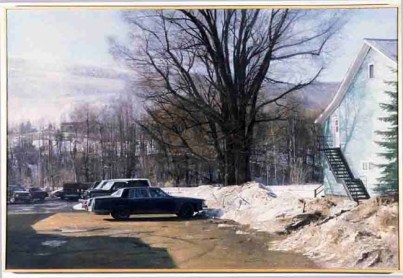
Catskill Cadillac (1999)
David Hockney 1937
David Hockney said about his recent series of large landscape paintings: “I want to show people the world. I think we see things from pictures…otherwise people don’t see things much. They don’t look hard at the world. Well, I do.”
I missed Hockney’s exhibition at the RA, but I was fortunate enough to see his painting of A Closer Winter Tunnel in the flesh at Sydney’s art gallery in 2010. Rather incongruously hung above an escalator between floors.
Hockney has been lauded greatly for his most recent large scale paintings of the English landscape that he has recorded in great detail, noting every plant and tree that he paints in his finished pieces. I can’t say I am a fan of his landscape work – but he has made a point of painting very accurate scenes using a characteristically interesting colour palette.
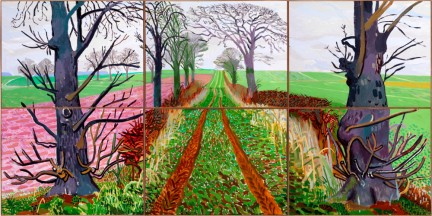
A Closer Winter Tunnel, February – March, 2006
Contemporary artists
Robert Perry Artist
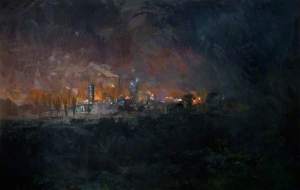
Synthetic Chemicals Factory
by Robert Perry 1989
Gregory Thielker
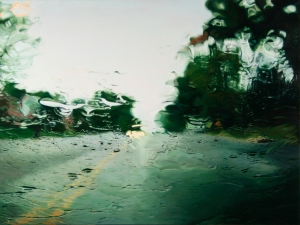
Route 7 Gregory Thielker
“Harlech Castle by Paul Sandby 1776” by Stephencdickson – Own work. Licensed under Creative Commons Attribution-Share Alike 4.0 via Wikimedia Commons – http://commons.wikimedia.org/wiki/File:Harlech_Castle_by_Paul_Sandby_1776.JPG#mediaviewer/File:Harlech_Castle_by_Paul_Sandby_1776.JPG
“Thomas Girtin 003” by Thomas Girtin – The Yorck Project: 10.000 Meisterwerke der Malerei. DVD-ROM, 2002. ISBN 3936122202. Distributed by DIRECTMEDIA Publishing GmbH.. Licensed under Public domain via Wikimedia Commons – http://commons.wikimedia.org/wiki/File:Thomas_Girtin_003.jpg#mediaviewer/File:Thomas_Girtin_003.jpg
“Vale Near Matlock Alexander Cozens” by Alexander Cozens – http://www.paperblog.fr/2629642/les-aquarellistes-anglais-du-siecle-d-or-1750-1850-deuxieme-partie-john-cotman-alexander-cozens-john-robert-cozens-john/. Licensed under Public domain via Wikimedia Commons – http://commons.wikimedia.org/wiki/File:Vale_Near_Matlock_Alexander_Cozens.jpg#mediaviewer/File:Vale_Near_Matlock_Alexander_Cozens.jpg
“Claude Monet – Les arceaux de roses, Giverny (Les arceaux fleuris)” by Claude Monet – http://www.invertirenarte.es/: Gallery, Pic. Licensed under Public domain via Wikimedia Commons – http://commons.wikimedia.org/wiki/File:Claude_Monet_-_Les_arceaux_de_roses,_Giverny_(Les_arceaux_fleuris).jpg#mediaviewer/File:Claude_Monet_-_Les_arceaux_de_roses,_Giverny_(Les_arceaux_fleuris).jpg
http://www.wikiart.org/en/georges-seurat/alfalfa-st-denis-1886
“Serusier – the talisman” by Paul Sérusier – Musée d’Orsay, Paris, France.. Licensed under Public domain via Wikimedia Commons – http://commons.wikimedia.org/wiki/File:Serusier_-_the_talisman.JPG#mediaviewer/File:Serusier_-_the_talisman.JPG
http://www.nationalgallery.org.uk/paintings/akseli-gallen-kallela-lake-keitele
“‘Weisses Haus in Dangast’, oil painting by Erich Heckel, 1908”. Via Wikipedia – http://en.wikipedia.org/wiki/File:%27Weisses_Haus_in_Dangast%27,_oil_painting_by_Erich_Heckel,_1908.jpg#mediaviewer/File:%27Weisses_Haus_in_Dangast%27,_oil_painting_by_Erich_Heckel,_1908.jpg
https://www.museumwales.ac.uk/art/online/?action=show_item&item=734(Hekel lake near Wales)
“Nighthawks by Edward Hopper 1942” by Edward Hopper – email. Licensed under Public domain via Wikimedia Commons – http://commons.wikimedia.org/wiki/File:Nighthawks_by_Edward_Hopper_1942.jpg#mediaviewer/File:Nighthawks_by_Edward_Hopper_1942.jpg
“JohnSalt CatskillCadillac” by http://www.artnet.com/magazine/FEATURES/laplaca/laplaca3-11-9.asp. Licensed under Fair use of copyrighted material in the context of John Salt via Wikipedia – http://en.wikipedia.org/wiki/File:JohnSalt_CatskillCadillac.jpg#mediaviewer/File:JohnSalt_CatskillCadillac.jpg
http://hockney.guggenheim-bilbao.es/en/works/a-closer-winter-tunnel-february-march/
http://www.bbc.co.uk/arts/yourpaintings/paintings/synthetic-chemicals-factory-19474
http://www.amusingplanet.com/2010/10/amazing-rainy-day-paintings-by-gregory.html
